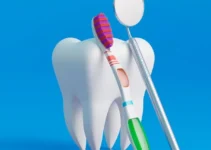A removable partial denture (RPD) can be an effective solution for those missing one or more teeth, but not all of their teeth. Unlike fixed dentures, RPDs are designed to be taken out and cleaned daily, offering a blend of convenience and oral hygiene. They help maintain the structure of the jaw, prevent the remaining teeth from shifting, and can improve chewing and speech. Additionally, RPDs are typically more cost-effective than their permanent counterparts, making them a popular choice among patients looking to restore functionality without invasive procedures.
Benefits of Removable Partial Dentures
Removable partial dentures (RPDs) play a crucial role in restorative dentistry, offering patients a practical and functional solution for missing teeth. They come with a plethora of benefits, making them a popular choice among both patients and dental professionals. From enhancing oral function to providing a cost-effective alternative to fixed prosthetics, RPDs are an invaluable option in contemporary dental care.
Understanding the myriad benefits of RPDs can help patients make informed decisions about their oral health. This article delves into the key advantages of using removable partial dentures, including improved oral function, enhanced aesthetics, and their cost-effectiveness. Each of these benefits contributes to the overall appeal and utility of RPDs in dental restoration.
Improved Oral Function
One of the most significant benefits of removable partial dentures is the improvement in oral function they provide. Missing teeth can severely impact chewing efficiency and speech clarity. RPDs are designed to address these issues by effectively replacing lost teeth, thereby restoring normal chewing function and enhancing the clarity of speech.
Studies have shown that patients with complete or partial edentulism who use RPDs report a marked improvement in their ability to consume a wider variety of foods. This dietary flexibility is crucial for maintaining optimal nutrition. Furthermore, RPDs help in maintaining the proper alignment of remaining teeth, preventing them from shifting into the gaps left by missing teeth, which can cause further dental complications.
Additionally, RPDs support the structures of the mouth and face, preserving the jawbone and preventing bone resorption, which often occurs due to tooth loss. This structural support is pivotal in maintaining a balanced occlusion and overall oral health.
Enhanced Aesthetics
Another critical benefit of removable partial dentures is their ability to enhance the aesthetics of a patient’s smile. Missing teeth can significantly impact a person’s confidence and self-esteem. RPDs are customized to match the natural appearance of the patient’s teeth and gums, ensuring a seamless and natural-looking restoration.
Modern advancements in dental materials and technology have made it possible to create RPDs that are virtually indistinguishable from natural teeth. This not only improves the patient’s appearance but also boosts their self-confidence. The use of high-quality acrylics and metals ensures that RPDs are both durable and aesthetically pleasing.
Moreover, the versatility of RPDs means they can be designed to accommodate various aesthetic requirements, including the color, shape, and size of the artificial teeth. This customization ensures that each patient’s unique dental landscape is addressed, providing a personalized and satisfactory aesthetic outcome.
Cost-Effective Solution
Financial considerations are often a significant factor in dental treatment decisions. Removable partial dentures present a cost-effective solution for patients who require tooth replacement but may not have the resources for more expensive alternatives like dental implants or fixed bridges.
The initial cost of RPDs is generally lower than that of other prosthetic options, making them accessible to a broader range of patients. Additionally, the maintenance and repair costs for RPDs are typically more affordable compared to more permanent solutions. This makes RPDs a prudent choice for long-term dental care.
Moreover, RPDs offer flexibility in treatment planning. They can be easily adjusted or modified as the patient’s dental needs evolve, providing a versatile and economical option for ongoing oral health management. This adaptability further enhances their value as a cost-effective dental solution.
For more in-depth insights into dental restorations and other innovative treatments, be sure to explore our other articles. Knowledge is power, and staying informed about your oral health options is the first step towards a brighter, healthier smile.
Maintenance and Care
Caring for dental implants is crucial to ensure their longevity and efficiency. Proper maintenance not only secures the structural integrity of the implant but also promotes overall oral health. Neglecting care can lead to complications such as peri-implantitis and implant failure. Understanding and adhering to maintenance protocols can make a significant difference. One of the first steps in maintaining dental implants is to have a comprehensive understanding of daily hygiene practices and regular check-ups. These efforts collectively contribute to the seamless integration and function of the implants, ensuring they perform efficiently for many years. Here, we will discuss essential daily cleaning tips and the importance of regular dental visits.
Daily Cleaning Tips
Just like natural teeth, dental implants require regular and diligent cleaning to prevent plaque buildup and maintain oral hygiene. It is advisable to use a soft-bristled toothbrush to gently scrub all surfaces of the implant. Avoid hard-bristled brushes as they can scratch the implant surface, leading to bacteria accumulation.
Along with brushing, the use of an interdental brush or floss specifically designed for implants is recommended. These tools help in cleaning areas that regular brushes may miss, such as the spaces between the implant and adjacent teeth. Incorporating these tools into your daily routine can prevent the onset of gum disease.
Mouth rinses with antibacterial properties can also be beneficial. They help to eliminate harmful bacteria that could potentially cause infections around the implant. However, it is important to choose rinses without alcohol, as alcohol can be harsh on the oral tissues.
Regular Dental Check-Ups
Regular visits to your dentist are essential to monitor the health and stability of your dental implants. Professional cleanings performed by dental hygienists ensure that hard-to-reach areas are thoroughly cleaned, mitigating the risk of infection.
During these check-ups, your dentist can also perform necessary assessments to ensure that the implant is properly integrated and stable. Radiographic evaluations might be needed to examine the bone surrounding the implant and to check for any signs of bone loss.
Moreover, these appointments provide an opportunity to address any concerns or issues you may have regarding your implants. Early detection and intervention of potential problems can save your implants and prevent more extensive treatments later.
By adhering to a routine of daily cleaning and professional check-ups, you can significantly prolong the lifespan of your dental implants. Taking these proactive steps ensures a healthy oral environment and contributes to the overall success of your dental restoration. Make sure to explore more articles to stay informed about the best practices in dental implant care.
Who Can Benefit from Removable Partial Dentures?
Removable partial dentures (RPDs) are a versatile and cost-effective solution for replacing missing teeth. They offer numerous benefits, from improved aesthetics to enhanced oral functionality. But not everyone is an ideal candidate for RPDs. This article explores the different individuals who can benefit from this dental prosthesis.
Understanding who can benefit most from removable partial dentures requires a detailed look at the ideal candidates, key considerations, and potential contraindications. This will help both patients and dental professionals make informed decisions regarding treatment options.
By examining these aspects, we can ensure that the right individuals receive the most suitable treatment, thereby improving overall oral health and patient satisfaction.
Ideal Candidates
Removable partial dentures are highly recommended for individuals who have lost several teeth but still retain some of their natural teeth. The presence of natural teeth provides critical support and stabilization for the dentures, making them more comfortable and functional. Patients with healthy gums and optimal oral hygiene practices are generally good candidates.
Additionally, older adults who may not be suitable for more invasive procedures like dental implants due to health concerns often find RPDs to be an excellent alternative. Those who need a non-permanent solution while considering future dental work like implants or bridges may also benefit from RPDs.
Individuals seeking a cost-effective way to replace missing teeth also find RPDs advantageous. Unlike implants and bridges, which can be more expensive, RPDs offer an affordable solution that can significantly improve one’s quality of life.
Considerations and Contraindications
While RPDs can be an excellent solution for many, there are several considerations and contraindications to keep in mind. For instance, individuals with severe periodontal disease may not be ideal candidates, as unhealthy gums can undermine the stability and comfort of the dentures.
Moreover, patients with allergies to denture materials, such as certain metals or acrylics used in the construction of RPDs, should consider alternative options. Dentists need to conduct a thorough assessment to identify any potential allergic reactions before proceeding with RPDs.
Another important consideration is the patient’s manual dexterity and cognitive function. Because RPDs require regular removal and cleaning, individuals with limited dexterity due to conditions like arthritis or those with cognitive impairments may struggle with the maintenance, thereby affecting their oral hygiene.
Finally, aesthetic considerations play a role. Some patients may prefer more permanent, natural-looking solutions like implants or bridges. While RPDs can be designed to look quite natural, they may not meet the aesthetic expectations of every patient. For further insights into dental health solutions and the latest advancements in dental technology, be sure to explore our other articles. Your journey to optimal oral health continues here.
Common Questions About Removable Partial Dentures
If you’re considering a removable partial denture, here are some commonly asked questions to help you understand how they can benefit your dental health.
What are the main advantages of choosing a removable partial denture?
Removable partial dentures are a cost-effective solution for replacing missing teeth. They help improve chewing and speaking functions, prevent other teeth from shifting, and maintain the structure of your face by providing necessary support. Additionally, they are less invasive than other dental procedures like implants and can be adjusted or easily removed for cleaning.

My name is Salman Kapa, a 73-year-old expert in bone regeneration and dental implantology. With decades of experience in the field, I am dedicated to advancing our understanding of oral health and hygiene. Through my research and writing, I aim to contribute to the development of innovative solutions in dental care.




